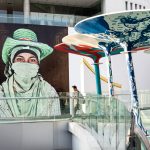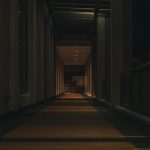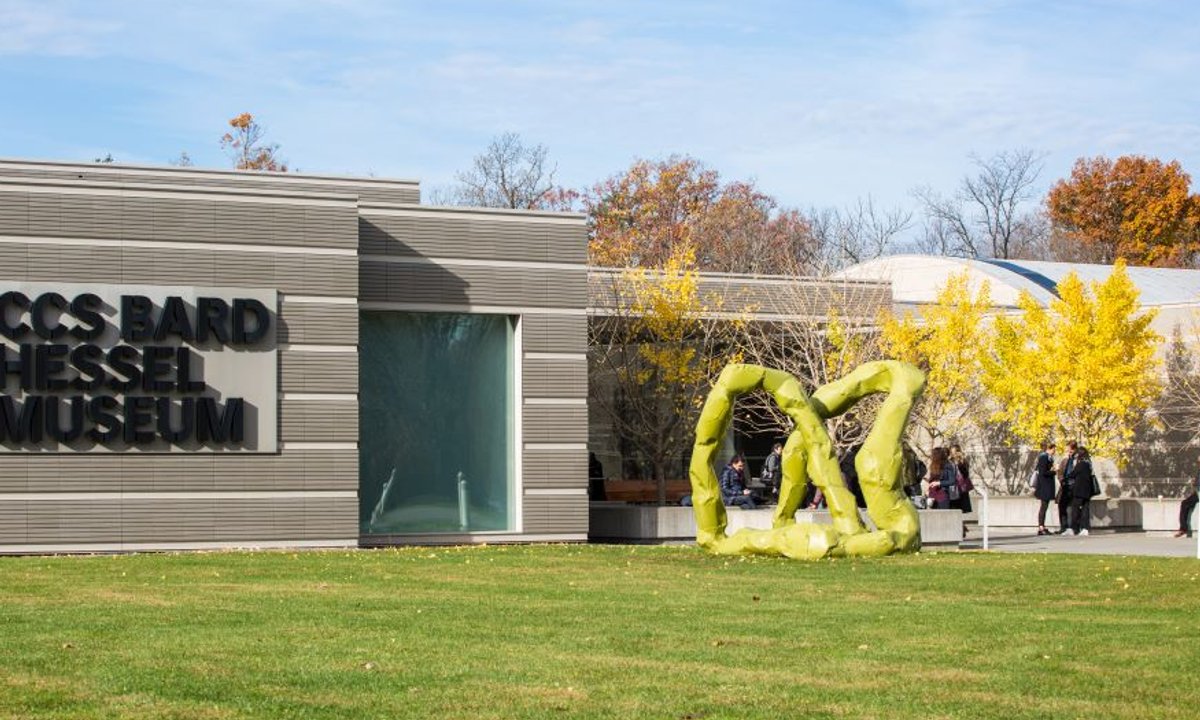Habito/Habitante
1982 - Performance (Performance)
260 x 145 cm
Martha Araújo
In Habito/Habitante , the suspended material renders the wall a prison and the participant a prisoner. The liberating impulsion releases the participant. The act of freeing oneself, of flying, and escaping from constraints is an action that is both extremely symbolically and physically significant. The sound produced by the Velcro upon the detachment of the material from the wall enhances this sense of release. The repetition of the same gesture during a performance gives the act a status of ritual, giving awareness to the power of the action. The work has a political and social meaning lies in the epoch within which it was created—the transitional period when Brazil became a democracy in the 1985 elections. The individual dimension of the liberating experience is thought as a moment of collective construction of a new political context. This work is a testimony and a witness to the emotions and the spirit of the state in this moment of profound political change that is inscribed in the physical and psychological body of an entire generation. Martha Araujo states: “For me these gests are the means to find ourselves with ourselves, the others and the environment within which we live while liberating ourselves”.
Since the 1980s, Martha Araujo, (b. 1943 Maceio, Brazil) has explored the physical and psychology limits of the body. She has explored space, the body and mind by asking spectators to use objects and clothing that she produces and exhibits in exhibition spaces. Many of her works are related to her performing installations between 1982 and 1987 entitled “Habito / Habitante”. From a historical perspective, her approach relates to Helio Oïticica and Lygia Clark. Her work is now being reconsidered, like those of other artists from South America, thought to be an alternative to performative gestures in the United States and Europe. The use of the body is linked to African-Brazilian rituals, carnivals and especially to specific political contexts where the body is a means of resistance.
Colors:
Related works sharing similar palette
» see more

© » KADIST
Calderón & Piñeros (La Decanatura)
2018Calderón & Piñeros (La Decanatura) refer to Sólheimasandur as a work that tackles the issue of “the ruin as a tourist destination.” As they say, “at the end, tourists become an essential part of this unusual, beautiful, and—at the same time—banal landscape.” The video features a plane wreck on Sólheimasandur beach in Iceland, where a navy plane belonging to the United States Army crashed in 1973 due to fuel exhaustion...

© » KADIST
Joanna Piotrowska
2015This selection of photographs taken between 2014 and 2019 focus on Piotrowska’s long-term preoccupation with issues of domesticity and containment...

© » ARTS EQUATOR
Weekly Southeast Asia Radar: Vietnam's post-war writers; Burmese voices in book | ArtsEquator Thinking and Talking about Arts and Culture in Southeast Asia ArtsEquator Radar BACC October 8, 2020 ArtsEquator’s Southeast Asia Radar features articles and posts about arts and culture in Southeast Asia, drawn from local and regional websites and publications – aggregated content from outside sources, so we are exposed to a multitude of voices in the region...
Related works found in the same semantic group
» see more

© » HYPERALLERGIC
Remembering Indigenous Artist and Organizer Klee Benally Skip to content In 2011, Klee Benally and his wife Princess Benally collaborated with artist Chip Thomas on a public art project in Downtown Flagstaff featuring the two gazing at each other with the words “What we do to the mountain, we do to ourselves.” (image courtesy Chip Thomas) chip thomas In 2011, Klee Benally and his wife Princess Benally collaborated with artist Chip Thomas on a public art project in Downtown Flagstaff featuring the two gazing at each other with the words “What we do to the mountain, we do to ourselves.” (image courtesy Chip Thomas) chip thomas In 2011, Klee Benally and his wife Princess Benally collaborated with artist Chip Thomas on a public art project in Downtown Flagstaff featuring the two gazing at each other with the words “What we do to the mountain, we do to ourselves.” (image courtesy Chip Thomas) chip thomas PHOENIX — Multiple communities are mourning the loss of Klee Benally, an anti-colonial Indigenous activist, installation artist, filmmaker, and musician whose work centered around land rights, Indigenous liberation, and climate justice...

© » ARTS EQUATOR
Yale-NUS closure: Artistic legacies and loss in (de)liberation | ArtsEquator Thinking and Talking about Arts and Culture in Southeast Asia ArtsEquator Viewpoints Raphael Hugh October 6, 2021 By Clara Che Wei Peh and Tee Zhuo (2,500 words, 10-minute read) In August, the National University of Singapore (NUS) announced unilaterally that Yale-NUS College would be shut down by 2025, marking what many see as a premature end to the partnership between Yale University and NUS that started in 2011...

© » ARTS EQUATOR
The disturbing cruelty of Terre Thaemlitz's "Deproduction" | ArtsEquator Thinking and Talking about Arts and Culture in Southeast Asia Articles Courtesy of Comatonse Recordings September 22, 2019 By Luke Macaronas (765 words, 5-minute read) Content warning: References to sexual content, situations and violence The final line of Terre Thaemlitz’s Deproduction reads: “Admit it’s killing you, and leave.” It is a neat summary of the work—a deeply nihilistic critique of contemporary family values and neo-liberal queer politics...


